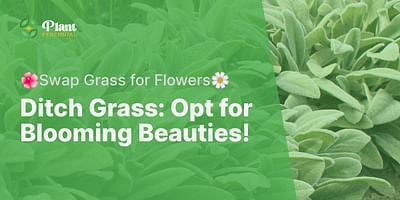Bethany Gislason is an avid gardener who has spent over a decade nurturing perennials. Her passion for gardening has led her to explore new plants and sustainable techniques, resulting in picturesque and enduring gardens. Away from her garden, Bethany is a hiking enthusiast and an ardent reader.
Perennial bean plants are a fantastic addition to any garden. Not only do they provide a beautiful vertical element, but they also offer a bountiful harvest year after year. In this guide, I'll walk you through the essential steps to care for your perennial bean plants and ensure they thrive in your garden.
Planting: When it comes to planting perennial bean plants, choose a location that receives full sun and has well-draining soil. These plants prefer a pH level between 6.0 and 7.0. Before planting, prepare the soil by loosening it with a garden fork or tiller. Incorporate organic matter, such as compost or well-rotted manure, to improve soil fertility and drainage.
Watering: Perennial bean plants require consistent moisture, especially during the growing season. Water deeply and regularly, aiming for about 1 inch of water per week. However, be cautious not to overwater, as excessive moisture can lead to root rot. To retain soil moisture and suppress weeds, apply a layer of organic mulch around the base of the plants.
Fertilizing: To promote healthy growth and abundant flowering, fertilize your perennial bean plants annually. In early spring, before new growth emerges, apply a balanced slow-release fertilizer according to the package instructions. Avoid over-fertilizing, as this can result in excessive foliage growth at the expense of flowers.
Support: Perennial bean plants are climbers, so providing a sturdy support structure is crucial. Install trellises, stakes, or a fence near the planting area to allow the vines to climb. As the plants grow, gently guide the tendrils onto the support structure to help them establish a strong grip.
Pruning: Pruning perennial bean plants is essential for maintaining their shape and promoting better airflow, which reduces the risk of disease. In late winter or early spring, before new growth begins, prune back any dead or damaged vines. Additionally, trim back any excessive growth to keep the plant tidy and prevent it from becoming too unruly.
Pest and Disease Control: While perennial bean plants are generally resistant to pests and diseases, it's still important to keep an eye out for any signs of trouble. Aphids and spider mites can occasionally infest the plants, so monitor them regularly and take action if necessary. If you notice any signs of disease, such as leaf spots or wilting, promptly remove and destroy the affected foliage to prevent further spread.
Harvesting: Perennial bean plants typically produce a bountiful harvest of delicious beans. Harvest the pods when they are young and tender, before the seeds inside fully develop. Regularly harvesting the beans will encourage the plant to continue producing throughout the season.
By following these care guidelines, your perennial bean plants will thrive and provide you with a beautiful vertical element in your garden, as well as a delicious harvest year after year. Enjoy the process and the rewards of growing these wonderful plants!















